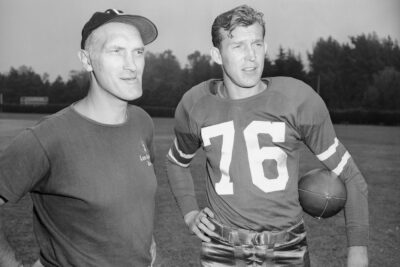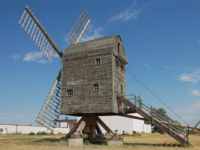How a quirk of wartime football led to an extra list of AP All-Americans during the 1940s
By Canadian Press on August 14, 2025.

Here is a trivia question that should stump your friends: A football player named Dick Todd once made an AP All-America team the year AFTER winning an NFL title. How was such a thing possible?
The answer is that in 1943, Todd played for a service team — a quirk of wartime football that led some NFL players back to college football. Sort of.
During World War II, military posts in the U.S. fielded football teams of their own. These weren’t college teams in any traditional sense, but they were part of the college game. In addition to facing each other, they took on college programs and were included in AP team rankings.
The AP, at least in 1943 and 1944, also named a service All-America team in addition to its more traditional one for college players that began in 1925.
That’s how Todd, who was on Washington’s 1942 NFL championship team, became an AP military service All-American in 1943. He played for Iowa Pre-Flight, which finished that season ranked No. 2 in the AP poll — between No. 1 Notre Dame and No. 3 Michigan.
“There were some very strong teams,” said College Football Hall of Fame historian Denis Crawford, who noted that service teams also existed in World War I. That’s how the 1918 Rose Bowl came to pit Camp Lewis (Army) against Mare Island (Marines).
After making the college All-America team in 1943 with Northwestern, future Hall of Famer Otto Graham was named to the service All-America team the following year with North Carolina Pre-Flight.
Bruce Smith won the 1941 Heisman Trophy as a running back for Minnesota. He later played for both Great Lakes Naval and St. Mary’s Pre-Flight. The transfer portal was wild back then.
Randolph Field played Texas to a 7-7 tie in the 1944 Cotton Bowl, with former Tulsa star Glenn Dobbs throwing a touchdown pass.
Since the service teams could include ex-college stars and players with NFL experience, perhaps it’s no surprise that facing them could be a challenge. Top-ranked Notre Dame was the AP’s national champion in 1943 despite losing its only game to a Great Lakes (Navy) team ranked No. 6.
Crawford said he isn’t aware of any major backlash to the idea of putting college players up against pros. Just keeping the sport going during the war was hard enough.
“I didn’t run across a lot of articles bemoaning this,” Crawford said. “I think people were just happy to have the distraction.”
Wartime football games were just one part of the relationship between the military and U.S. colleges. Training programs could help bring more people to campus — which schools certainly could use.
“The V-5 and V-12 programs had a direct impact on helping a lot of college football teams survive, and in the case of Notre Dame, helping the university survive,” Crawford said. “To this day, that’s why Navy and Notre Dame play every year. Notre Dame has a debt of gratitude to Navy for putting one of the V programs in South Bend, which kept that school humming.”
___
Get poll alerts and updates on the AP Top 25 throughout the season. Sign up here. AP college football: https://apnews.com/hub/ap-top-25-college-football-poll and https://apnews.com/hub/college-football
Noah Trister, The Associated Press
-19




